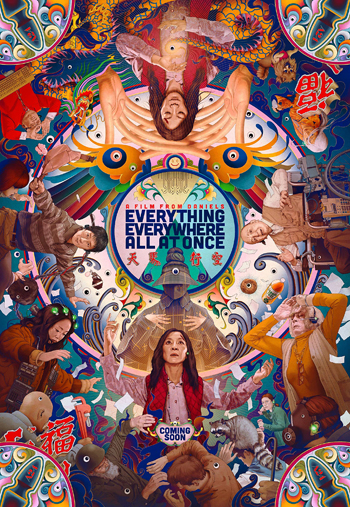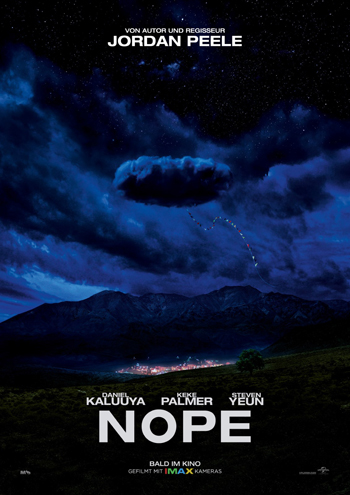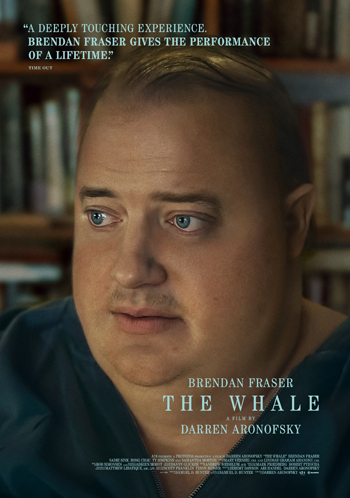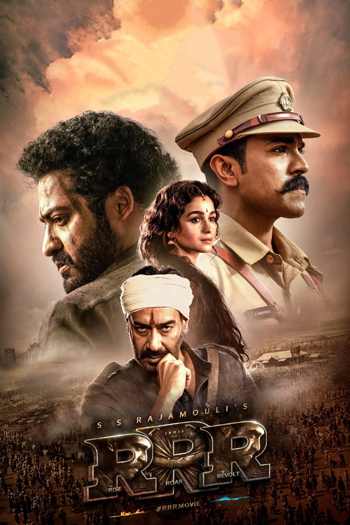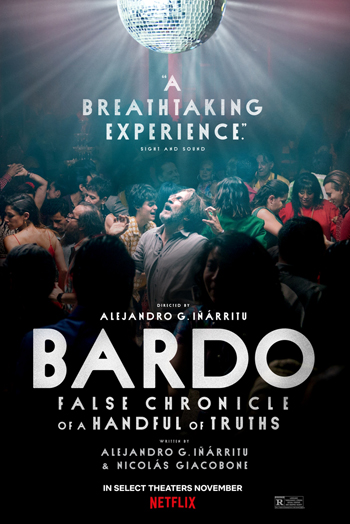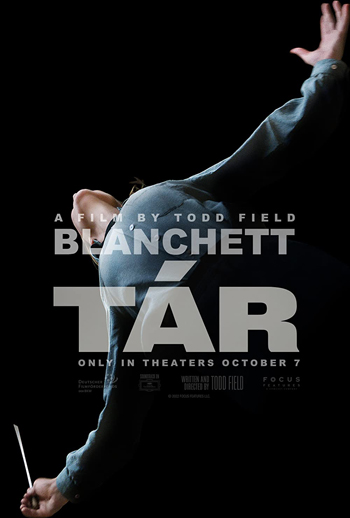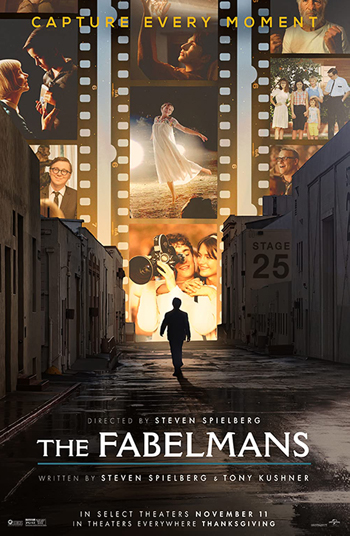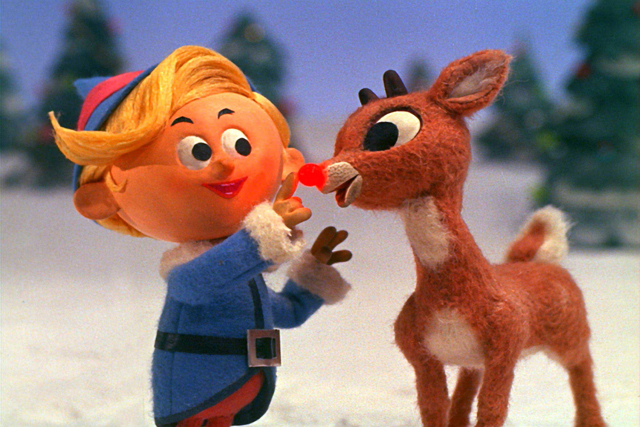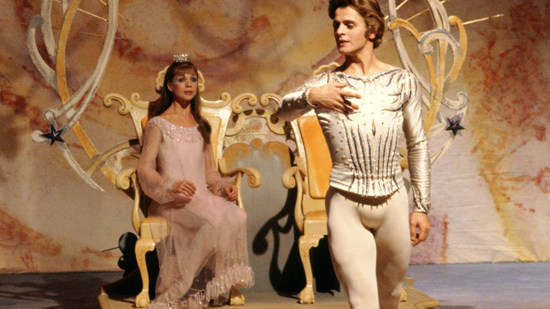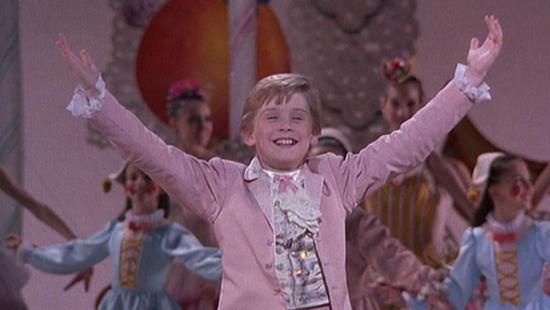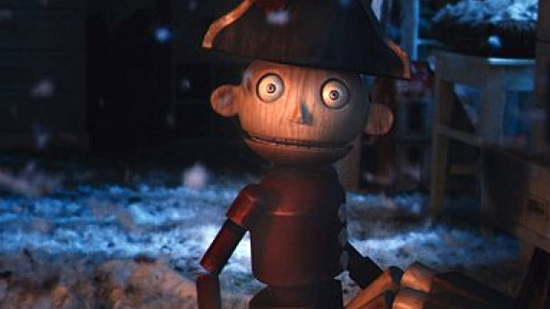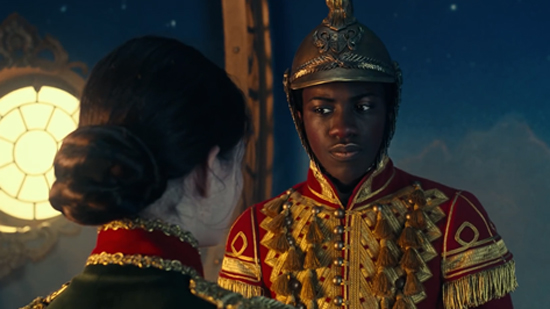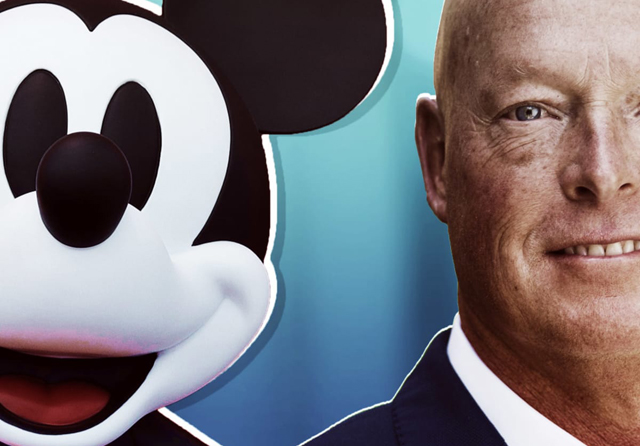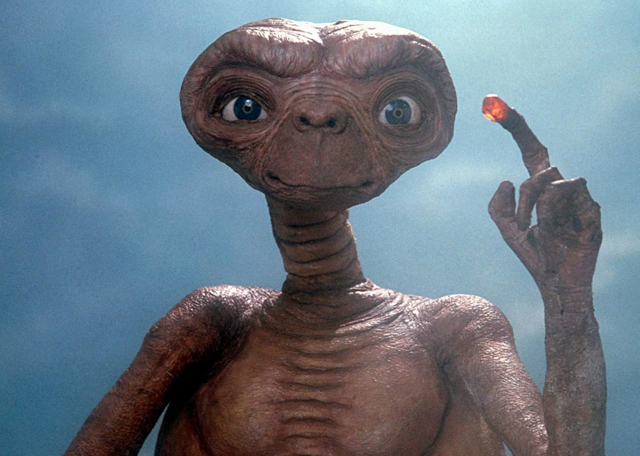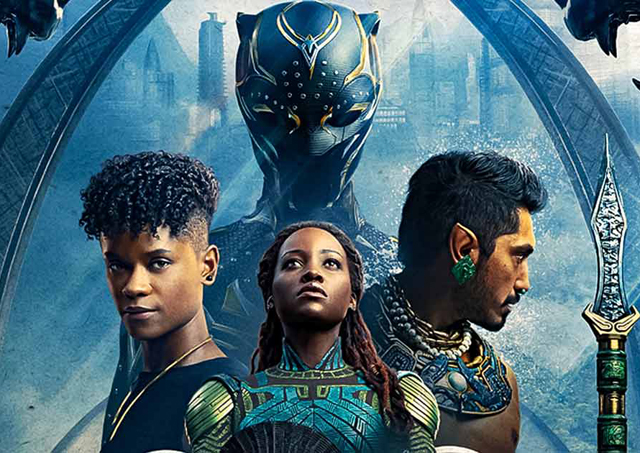
There seems to be a clash in entertainment when it comes to classifying what an animated film is. Many people consider animation a genre onto it’s own, which when you look at all the animated films that have been made, seems like a very reductive classification. Like film director Guillermo Del Toro, who himself has made an animated feature this last year, has recently said, “animation is a medium; not a genre.” And that’s true, because there are so many examples of other genres like science fiction, fantasy, and horror that have been represented in the form of animation. Animation is no more different than any other tool of storylelling that has been used in cinema, and yet the animation medium has long had to shake off the unfair distinction that it is just “kids stuff.” True, the biggest names in animation (namely Disney, Warner Brothers, Dreamworks) have made movies that can be watched by the youngest of audiences, but the same studios will tell you that they don’t make their movies solely for kids. Walt Disney himself scoffed at the idea that he made cartoons solely for children, saying that his movies were both “for the young, and the young at heart.” The snobbish attitude towards animation has changed over the years, and you will find that today some of the most ardent fans of animated films are not so much kids but rather adults. Sure children will still get a lot out of animation, but there is an ever growing market out there for grown up animation fans, who are far more likely to indulge in the lucrative collectible merchandise market. What has definitely emerged out of this growing fan base of animation aficionados is an awareness from Hollywood that animation is one of the most valuable mediums within the whole industry. Unfortunately, the industry can also take the wrong lesson from this and fall into bad judgments about how to exploit success without addressing the pre-conceived biases.
One problem that Hollywood still has within it’s perception of animation’s value is that it still places a superiority onto live action filmmaking that unfortunately perpetuates the idea that animation is less than in the business. This is certainly reflected in the way that Hollywood honors animation in their awards season. To this day, only 3 animated films have been nominated for Best Picture at the Academy Awards. And to make the struggle for the honor even harder, there is a separate category just for Animated Features, which in a way sequesters animated films from ever getting traction in the race over the live action films; much in the same way that Foreign Language films had to struggle to break out of their own category before Parasite (2019) finally broke through the glass ceiling. But, Hollywood cannot deny that Animated films are among the most lucrative in the industry. Studios often are helped by their animation wings to bring them within the black thanks to the broad audience support from all ages that consistently show up. Pixar, Dreamworks, and Illumination for the better part of the last decade have accounted for billions of dollars of profits for their respective studios alone, and that’s just based on the box office. Merchandise is a whole other industry that can benefit the movie studios that makes these movies. And yet, there is this belief in the industry that for the stories told in these films to truly be considered worthy in Hollywood, they must be as close to live action as possible in terms of how close they adhere to reality. There’s this tendency in animation studios to try to reign in their styles in order to be taken more seriously by the industry, or to forego more entertaining characterization in favor of ones that could be more closely connected with a familiar name. But, Hollywood even goes a step further by taking a hit animated film and reworking it completely so that it can become a live action film.
Now animation to live action remakes is not an impossible venture to undertake. In some ways it can be done, but more as a demonstration in how different mediums can be used to tell the same story. Disney for instance has made movies based on fairy tales, mainly because they are public domain so it’s easy to adapt, and secondly because they are already familiar stories that people know going in. All they have to do is offer their own spin on the story and make it entertaining. When a movie from the same studio, like Disney, adapts the same story for a different medium, they can have a bit more free reign to adapt the story differently. This is certainly what Disney did with what can be considered their first live action remake; 101 Dalmatians (1996). The live action version tells the same story, but does so in a different way that works within the limitations of live action filmmaking. Unlike the animated film, the dogs and animals never speak, and the focus is shifted more to the human characters and their story; particularly when it comes to the villainess, Cruella De Vil, played memorably by an over-the-top Glen Close. Sure for many the live action remake doesn’t replace the original animated film, but the “remake” did enough to have it feel like it’s own movie, divorced from it’s animated origins. And that’s because the filmmakers never intended to replace the original, but to merely offer up a different take on the same story, one that uses it’s medium just as well as the animated medium uses it’s own. But, one thing that did result from that experiment was big box office for Disney. The results were so good that the studio began to examine other titles within their library that could potentially be given the live action treatment. Initially, the plan was to update classic stories with more contemporary approaches, utilizing the kinds of cinematic advancements that could allow live action movies to do things that only animation could pull off before. As animation itself began to wane in the post Renaissance years at Disney during the 2000’s, live action began to seem like a more worthwhile investment for the studio. Less time consuming and often easier to alter mid-stream, live action was viewed as a safer bet. And thus began a decade of ever more pervasive animated remakes.
What was troubling about the glut of animation to live action remakes that pervaded the 2010’s was that they became increasingly meaningless over time. Unlike the 1996 101 Dalmatians, the more recent Disney remakes seem very reluctant to head off script. They are sometimes nearly shot for shot reproductions, but the results don’t work as well. How can that be? I think what it comes down to is that Disney seems to be under the suspicion that if they stray away too much from their formula, it will turn away audiences, but they don’t understand that by just repeating the same actions also exposes their lack of creativity in the same case. They work their best when they are aware they are adapting a story rather than repeating a scene. Of the remake era movies, the best ones are movies like Pete’s Dragon (2016) and Cinderella (2015), and that’s because those movies do enough differently that you don’t even think about the original movies that they are based on, offering up a better comparison. By contrast, you cannot help but think of the animated versions when watching Beauty and the Beast (2017) and The Lion King (2019), because they are pretty much exactly the same, with only minor changes. And the comparisons favor the live action versions very poorly. To call 2019’s The Lion King a live action remake is actually false, because it’s an animated film still, but one that’s trying way to hard to make you think it’s live action. Sadly, these movies did spectacularly well at the box office despite terrible reviews, and that only led to Disney feeling more emboldened to raiding their own library. In the process, they look less like a company striving for artistic merit and more like one cashing in for a quick buck. It’s however increasingly hard for Disney to continue to build off of this. They only have a finite amount of movies to remake before they scrape the bottom of the barrel, and they aren’t making them any better. Even classic era Disney is un-spared, as a Tim Burton directed remake of Dumbo (2019) and Robert Zemekis directed remake of Pinocchio (2022) have proved. The charmlessness of the Pinocchio remake particularly highlights the needless exploiting of these classic titles that has been going on.
But, Disney is not alone in their misguided attempts to adapt animation into a live action medium. There is another market of animation that has unfortunately succumbed to some terrible adaptations from Hollywood. That market would be Anime, the animation style originated and popularized in nations like Japan and South Korea. Japanese anime in particular has found a strong cult following here stateside, with rabid fandoms as strong as those found on the opposite side of the Pacific. And Hollywood has take notice too. Unfortunately, like with the success of Disney animation, the industry takes the wrong lessons, and mistakenly believe that what these anime properties need is a live action adaptation. Thus far, most of the anime remakes fall way short of their original predecessors. Some change so much that they are unrecognizable in comparison, like the failed Dragonball: Evolution (2009), or are so shot for shot faithful that they look like a cheapened rip off, like Netflix’s Cowboy Bebop series. Netflix in particular has struck out multiple times in trying to make anime properties work in live action, including their Death Note (2017) remake. And try as they might, Hollywood can’t seem to let go of making a live action Akira (1988), despite over 20 years of development with names like Leonardo DiCaprio and Taika Waititi attached to it at various times. Like the Disney remakes, all of these remakes make the same mistake in thinking that the name recognition alone will carry the production through. It doesn’t matter how glossy you’re film effects are or if you get a big name like Scarlett Johansson to play the lead part. Nothing can replicate the work that went into crafting the same world by hand. This is especially true with anime, because of the style of the animation, which utilizes limited frames per action. The same action just doesn’t look the same when it’s done in the 24 frames per second that live action produces. There is just something about animation that cannot translate perfectly into another medium, without that other medium also having to bend itself more towards animation.
Strangely enough, the reverse often has the opposite effect. Animated renditions of live action worlds have sometimes turned out to be really interesting experiments. This is especially true with anime projects that use big studio IP. This was the case with The Animatrix (2002), a compilation of anime shorts that were loosely connected to the storyline and world of the Wachowski’s Matrix trilogy. The result was a beautiful animated collection that some would argue were better as a whole than the live action sequels that they were meant to promote. Hollywood still hasn’t overlooked the value of using an animated medium to find added avenues to cross promote their live action properties. After the success of Tim Burton Batman movies, Warner Brothers launched an animated series that took it’s visual style cues from the Burton films, and the result is one of the most beloved animated shows of all time. That animated series in fact was so popular that a character created just for it, Harley Quinn, has been spun off into many different mediums including comic books and live action movies, where she is played by Margot Robbie. Star Wars also has managed to build it’s lore equally across both animation and live action, with The Clone Wars series being just as popular with fans as the movies are, and characters created in the Star Wars animated properties are also now finding themselves being worked into hit live action shows like The Mandalorian and Andor. Essentially, that’s where the happy medium is found between live action and animation; when both are treated as valid entryways into a larger story, and can be connected together without losing connective tissue.
What Hollywood seems to think wrongly is that these are competing modes of storytelling, rather than different tools that can both be effective in carrying a narrative. In some cases, a first impression is often to difficult to overcome with an adaptation, and that’s something that is true for both mediums. I think a lot of studios can’t succeed at taking chances on stories like Snow White, Sleeping Beauty, and The Little Mermaid because Disney’s adaptations are so iconic. Any studio is within their rights to make their own because of public domain laws, but they hesitate because of the unfair comparison they would face against the beloved classics from Disney. But, the same also applies with stories that were perfectly captured in live action. I have yet to see an animated film that succeeds at being as magical as MGM’s original The Wizard of OZ (1939), an example of a classic fairy tale that was definitively captured through live action. Basically, it comes down to what you are able to bring to a story that gives your movie value, and the best ability to stand on it’s own. This last year, we saw a perfect example of a live action remake failing to justify it’s existence, while a different re-telling of the same classic story succeeded, all at the same time. Disney’s Pinocchio (2022) is a textbook example of little effort put into a remake, leaving the movie to feel like a blatant cash grab that’s supposed to capitalize on the good will built around the original film that it’s trying to emulate. Audiences could see the shallowness of the film with little effort, and the movie was justifiably rejected by both critics and audiences alike. Meanwhile, Guillermo Del Toro released his own animated Pinocchio. Made using stop motion, the film distinguishes itself through an art style based around Del Toro’s own designs and with a decidedly darker tone that is closer to the original literary source than either of the Disney version. While the 1940 Disney version is still arguably the best cinematic version of the story, Del Toro’s Pinocchio is vastly superior to the remake, because it does the crucial job of creating it’s own identity and justifying it’s existence. It’s the story we all know, but done in a way that we haven’t seen. Ultimately, that’s what audiences want in the end, to have the familiar feel like something new again, and that’s something that both animation and live action can accomplish in their own way, without having to undermine the other.
There are indeed some things that animation can do better than live action, and vice versa. Animation for instance has been better used to make a person appear like they are flying, like the original Disney Peter Pan (1953). When you see Christopher Reeve fly as Superman or Robin Williams fly as Peter Pan in Hook (1991), you can still get a sense of the wire work. On the other hand, animation is a medium that can’t quite convey the subtlety of stillness in a movie. It’s a medium that is built around continuous movement, so it can’t quite pick up the same subtlety of an actors performance the same way a live action film can with a locked down, in focus camera close-up can. Imagine if animation tried to replicate the jail cell interrogation scenes from The Silence of the Lambs (1991). It could try, but the little details of Anthony Hopkins and Jodie Fosters facial expressions would be lost, as animators would try to add more movement to those facial expressions. It’s just the different natures of how the mediums work, and they both have their strengths and limitations. There are great subtle acting moments found in animation, as well as great cartoonish found in live action. Performance is also different across the spectrum, even with the same actors. A live action movie could not replicate what Robin Williams brought to the Genie in Aladdin (1992), but animation would also have a hard time replicating the physical comedic timing of his work in Mrs. Doubtfire (1993). So, I find it strange why Hollywood seems so insistent on trying to replicate animation into live action. The critical failure and rejection from fans to everything from the Disney remakes to the anime adaptations should prove that. Sure, you can make a quick buck on name recognition alone, but it’s a short term gain that does not have a long life span, and may in fact be doing damage to the brand overall. Hollywood should recognize that these are both equal mediums and should both be used when it’s best in service of the story. The current state of Star Wars is a prime example of how best to blend the two, with different mediums being used to tell different sides of a singular story. For right now, it would be best for Hollywood to see that animation is not inferior to live action, but is in fact a valuable medium perfect for exploring stories of all kinds. In the end, it’s the story that matters most, and more importantly, it’s got to be something that feels new and fresh. Don’t try to reinvent the wheel when you have the ability to fly.

